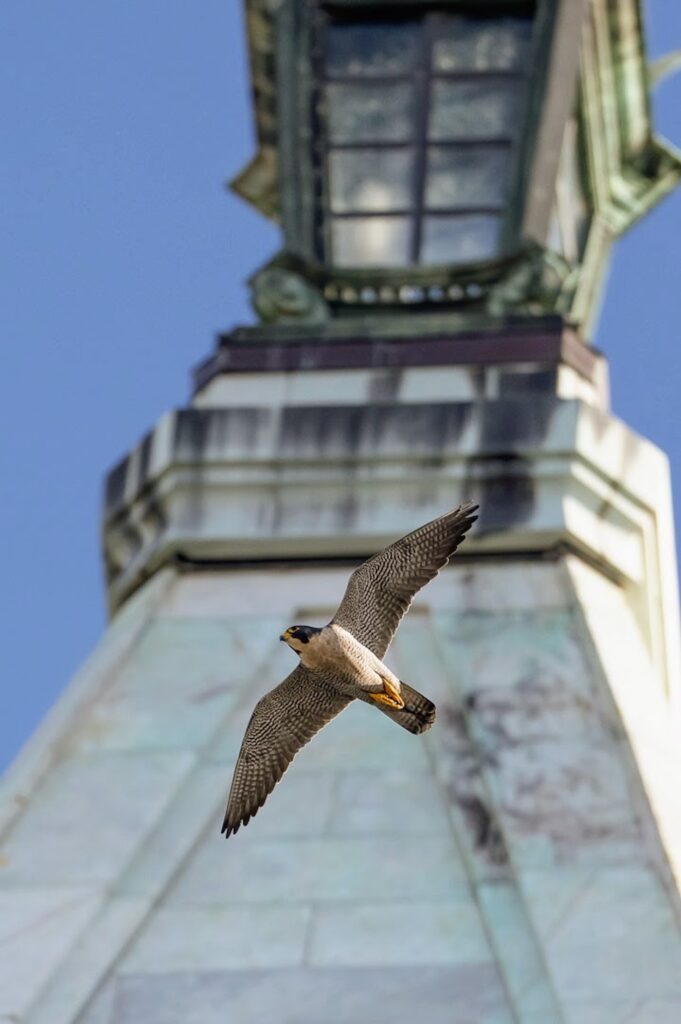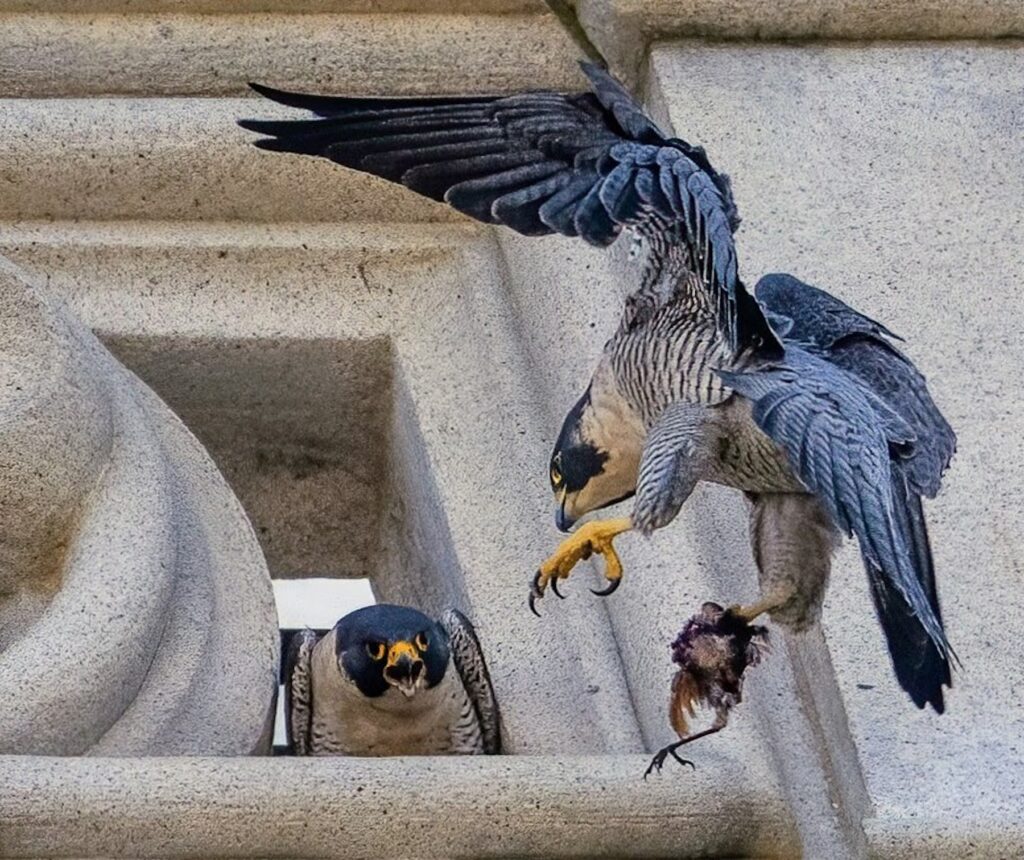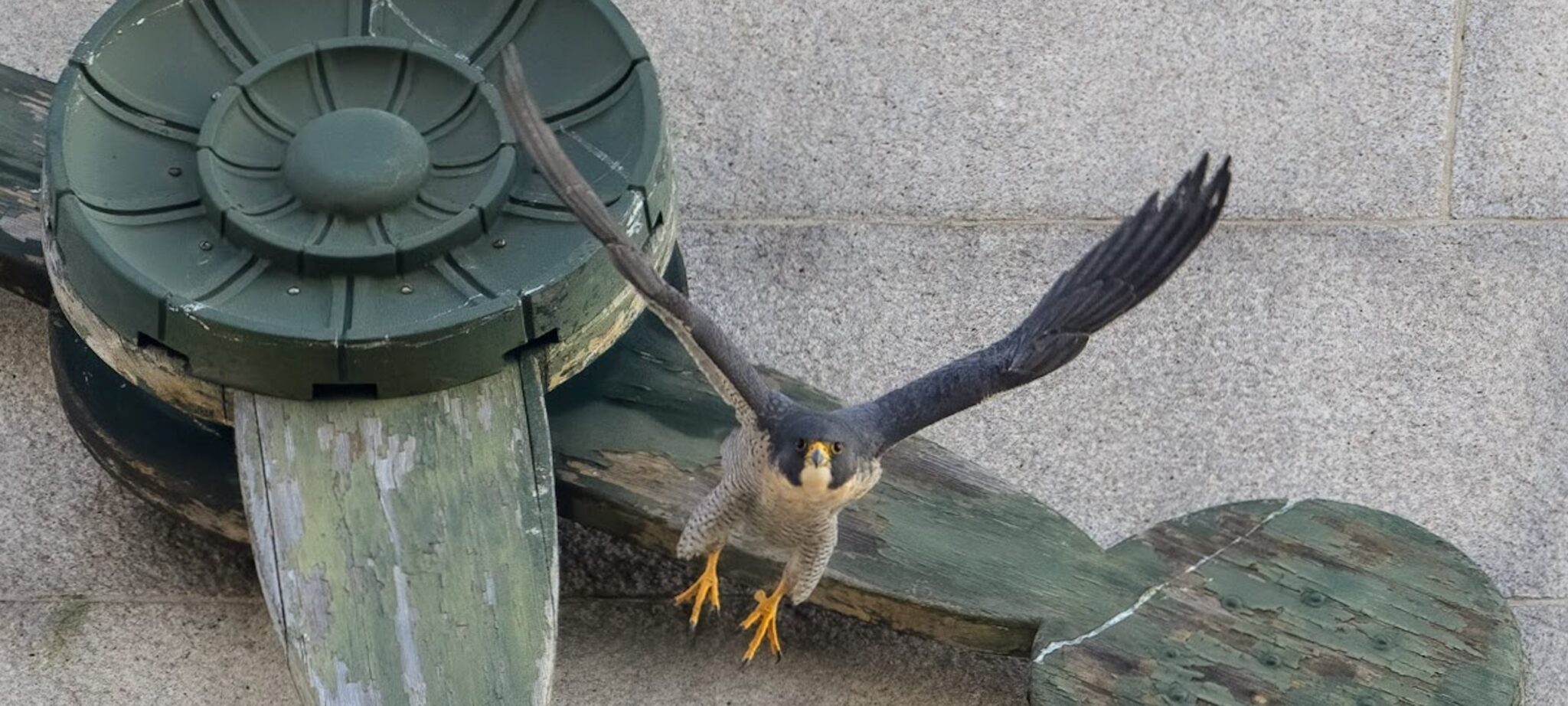If you look up at the Campanile these days, you may just spot one of Berkeley’s celebrated peregrine falcons diving from its heights. For some time now, the resident raptors have been bona fide celebrities. Fans have been enraptured with Annie and her mates, from her six loving years with Grinnell to her new chicks with Lou. But if you’d looked up before 2016, you wouldn’t have seen the famous falcons there. And in fact, 50 years ago, you’d have been hard-pressed to find a falcon anywhere in the United States.
“[The peregrine falcon] was considered completely extirpated from the eastern United States,” said Allen Fish, the director of the Golden Gate Raptor Observatory, a longtime program of the Golden Gate National Parks Conservancy. In 1973, in California, there were fewer than five nesting sites left. This was largely due to DDT, a pesticide developed in the 1940s to combat malaria and other mosquito-borne illnesses. It worked wonders for those working in agriculture, but it took several years for people to realize that it was also killing important insects, poisoning fish, and thinning the eggshells of birds like eagles and falcons to disastrous effect. Prior to the 1940s, it is estimated that there were 3,875 nesting pairs of falcons in North America. By 1975, there were only 324.
It would seem that peregrines were doomed, another victim in the so-called sixth mass extinction, as described in the 2011 study by Berkeley professor Anthony Barnosky calculating that three-quarters of today’s animal species could vanish within 300 years. But soon after the Environmental Protection Agency banned DDT in 1972, the birds began their comeback as organizations like the Peregrine Fund, UC Santa Cruz’s Predatory Bird Research Group, and Cornell University bred and reintroduced them into the environment. In the half-century since, the number of nesting sites in California has gone up from that fewer than five to more than 400. Fish says there are over 25 pairs in the Bay Area alone.

That points to another factor in the falcons’ resurgence; namely, their remarkable ability to adapt to urbanization. Peregrines like to nest in tall, vertical structures close to water—and luckily for them, the Bay Area is full of them.
“A big part of this peregrine story has been that peregrines have mistaken towers and bridges and skyscrapers for big, magnificent cliffs,” said Fish. “Turns out that peregrines don’t know that the Bay Bridge, the Fruitvale Bridge, and the whole lot of city skyscrapers around the country weren’t made for them.”
Peregrines have been nesting in cities since at least the 1970s, and Fish is aware of peregrines nesting in European bell towers going back centuries.
“If you or I had thought, ‘Wow, let’s think about making a perfect structure for a peregrine falcon in the middle of UC Berkeley,’ it would look a lot like the Campanile,” said Fish, who is also a member of the Cal Falcons team.
Nesting in cities does come with its share of problems, however: Falcons have been killed by cars, power lines, dogs, and, most commonly, windows. Rat poison, common in cities, can also affect the birds.
Despite all that, the powerful, fast-flying birds have managed to thrive in the urban setting, enchanting city dwellers who may not otherwise get a chance to see such wildlife.

This is the case too at Berkeley, where Annie and her mates have captivated the community for the past seven years.
Most people aren’t likely to read a scientific article on falcons, says Fish, but the community has become attached to the birds as they watch them on cameras every day. The love they have for their local falcon family even inspires them to come to educational Cal Falcons events, where they learn how to protect their beloved birds.
“In a lot of different places in the world where there are nest cameras and people get this intimate view, bonding starts happening between people, seeing how interesting the birds are,” Fish said. “The spark of interest that a pair like the peregrines at UC Berkeley can have is really what we need a lot of in the world.”
And there is more: Annie’s daughter and her mate settled on Alcatraz three years ago, becoming the first nesting pair recorded on the island. Maybe the old prison can take a hint from the university campus directly opposite. Alcatraz Falcons, anyone?


















